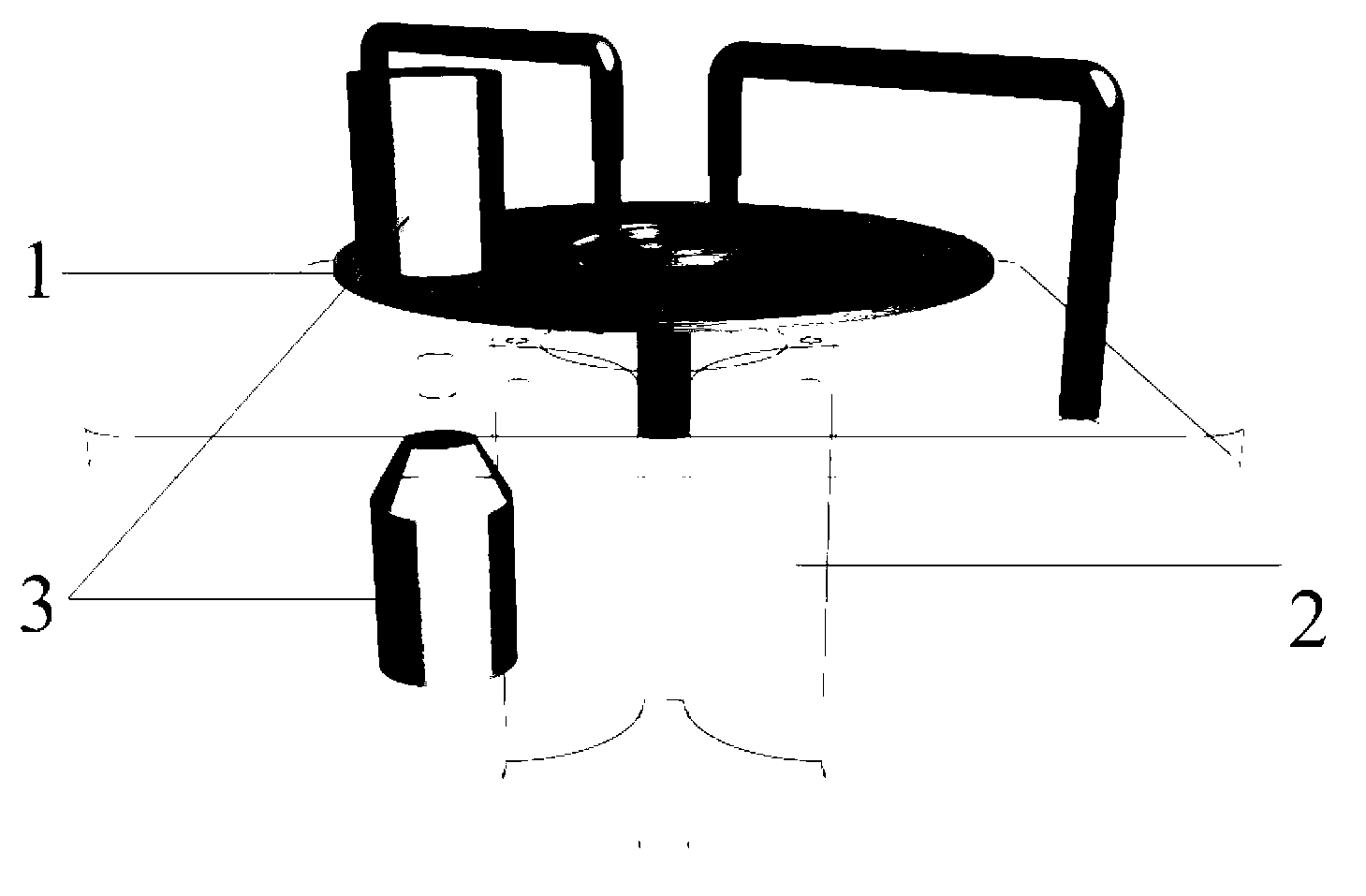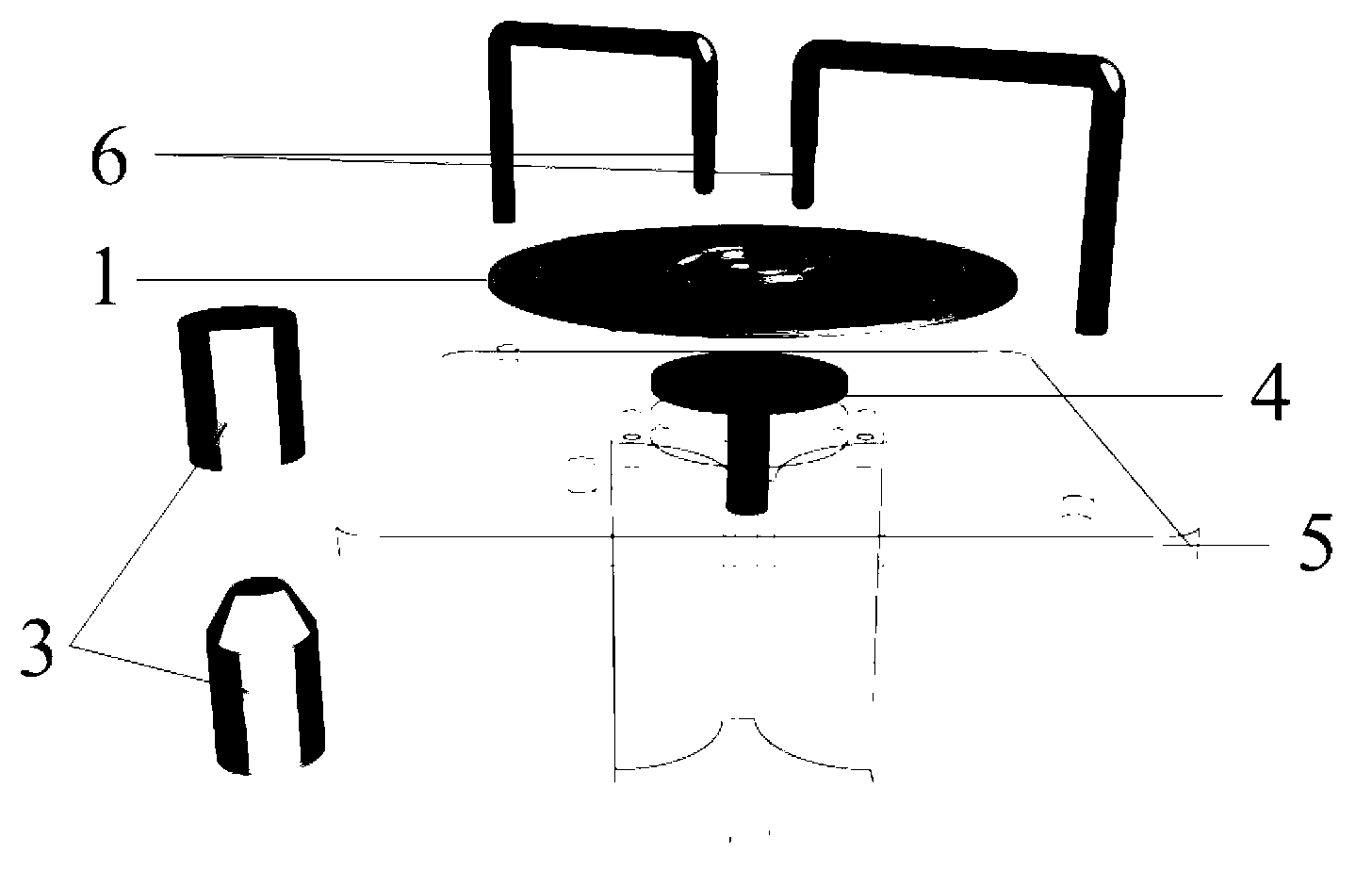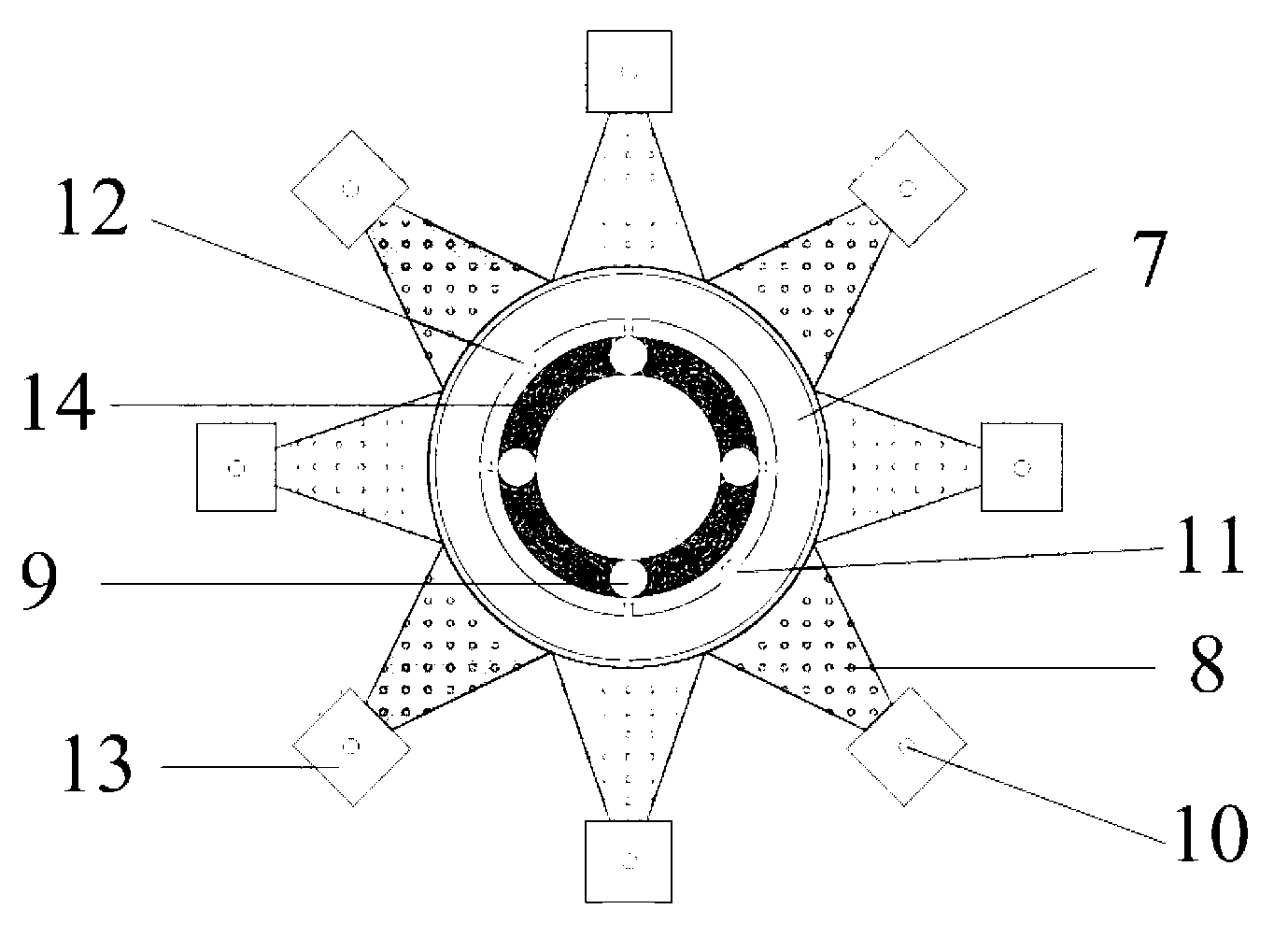Separate detection system and method of rare cells based on centrifugal micro-fluidic technology
A microfluidic technology and detection system technology, applied in biological testing, material inspection products, material excitation analysis, etc., can solve the problems of restricting large-scale applications, time-consuming, expensive instruments, etc., and achieve faster separation and detection speed and efficiency , Improve the separation purity, fast and efficient separation effect
- Summary
- Abstract
- Description
- Claims
- Application Information
AI Technical Summary
Problems solved by technology
Method used
Image
Examples
Embodiment 1
[0023] Collect about 5mL of peripheral blood from tumor patients, add EpCAM-labeled immune microspheres that can bind to tumor cells into the blood sample, and then inject it into the liquid storage cavity of the microfluidic chip of the rare cell separation detection system; place the chip after adding the sample Put it on the centrifugal platform, and assemble the elastic micro-column, rotate the centrifugal platform at 60~100 rpm to realize automatic and rapid mixing reaction; after 5 minutes, increase the rotational speed of the rotating centrifugal platform to 500 rpm to achieve the separation of target cells; 10 After 10 minutes, turn off the centrifugal platform, tear off the sealing tape of the sample port above each cell collection area, and add CD45-FITC that can identify blood cells and CK-PE antibody that specifically marks tumor cells into the cell collection area in turn, and the liquid addition is complete. Then seal each sample port with tape again; incubate for...
Embodiment 2
[0025] Collect about 100mL of human bone marrow, add CD71-labeled immune microspheres that can bind to fetal red blood cells into the blood sample, and then inject it into the liquid storage chamber of the microfluidic chip of the rare cell separation detection system; place the chip after adding the sample in a centrifuge On the platform, assemble the elastic micro-column, rotate the centrifuge platform at 60~100 rpm to realize automatic and rapid mixing reaction; after 5 minutes, increase the speed of the rotating centrifugal platform to 500 rpm to achieve the separation of target cells; after 10 minutes , turn off the operation of the centrifugal platform, and tear off the sealing tape of the sample port above each cell collection area, add the fluorescently labeled antibody solution that can recognize fetal red blood cell hemoglobin into the cell collection area, and seal the sample port again with tape after the liquid addition is completed; Incubate for 20 minutes, inject...
Embodiment 3
[0027] Collect about 1mL of human umbilical cord blood, add immune microspheres that can selectively bind to hematopoietic stem cells into the blood sample, and then inject it into the liquid storage chamber of the microfluidic chip of the rare cell separation detection system; place the added chip in a centrifuge On the platform, assemble the elastic micro-column, rotate the centrifuge platform at 60~100 rpm to realize automatic and rapid mixing reaction; after 5 minutes, increase the speed of the rotating centrifugal platform to 500 rpm to achieve the separation of target cells; after 10 minutes , turn off the operation of the centrifugal platform, and tear off the sealing tape of the sample port above each cell collection area, add the CD45-FITC solution that can identify hematopoietic stem cells into the cell collection area, and seal the sample port again with tape after the liquid addition is completed; For 20 minutes, inject phosphate buffer solution (PBS) into the chip ...
PUM
| Property | Measurement | Unit |
|---|---|---|
| Aperture | aaaaa | aaaaa |
Abstract
Description
Claims
Application Information
 Login to View More
Login to View More - R&D
- Intellectual Property
- Life Sciences
- Materials
- Tech Scout
- Unparalleled Data Quality
- Higher Quality Content
- 60% Fewer Hallucinations
Browse by: Latest US Patents, China's latest patents, Technical Efficacy Thesaurus, Application Domain, Technology Topic, Popular Technical Reports.
© 2025 PatSnap. All rights reserved.Legal|Privacy policy|Modern Slavery Act Transparency Statement|Sitemap|About US| Contact US: help@patsnap.com



